Capitole de Toulouse
The Capitole (French for 'capitol') is the heart of the municipal administration of the French city of Toulouse and its city hall.

_Le_Square_de_Gaulle.jpg)
History and description
It is not the same Capitol as the one where St Saturninus was martyred, the latter referring to the Capitoline temple of the Roman city, while the first buildings of the current Capitole were erected on this site in the 12th century.
The Capitouls (governing magistrates) of Toulouse embarked on the construction of the original building in 1190 to provide a seat for the government of a province growing in wealth and influence. The name "Capitole" referred not only to the Roman Capitol but also to the capitulum, which was the chapter of the governing magistrates. It was a centre of contention during the 1562 Toulouse Riots, with Huguenot forces holding it with captured cannon.
In the first half of the 19th century, the structures surrounding the vast (2 ha) Place du Capitole were redesigned, but the current façade, 135 m long and built of the characteristic pink brick in Neoclassical style, dates from 1750, built according to plans by Guillaume Cammas. The eight columns represent the original eight capitouls. In 1873, Eugène Viollet-le-Duc built a bell tower typical of the style of northern France on top of the donjon of the building. It was in this donjon that Jean Calas, a Protestant victim of a religiously-biased trial, was interrogated. Only the Henri IV courtyard and gate survive from the original medieval buildings. It was in this courtyard that the Duke de Montmorency was decapitated after his rebellion against Cardinal Richelieu. A thorough redesign of the Place du Capitole in 1995 reserved the space for pedestrians. Some of the interior of the Capitole can be traced back to the 16th century. Today the Capitole houses the city hall, as well as the Théâtre du Capitole de Toulouse opera company and the Orchestre national du Capitole de Toulouse. The Salle des Illustres contains 19th century works of art.
Gallery
 The capitouls' former tower (1525-1530, except for the top).
The capitouls' former tower (1525-1530, except for the top).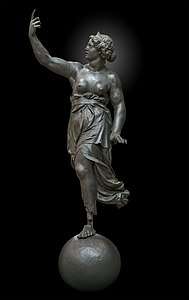 Jean Rancy's Dame Tholose, 1544–1550, that served as a weather vane on the tower.
Jean Rancy's Dame Tholose, 1544–1550, that served as a weather vane on the tower.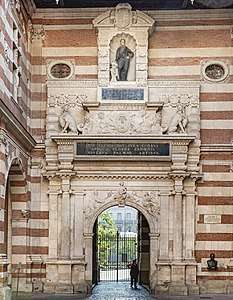 The Renaissance portal in the courtyard (16th and 17th c.).
The Renaissance portal in the courtyard (16th and 17th c.)..jpg) The lower part of the portal (1546) represents Pallas, protector of the city since Roman times.
The lower part of the portal (1546) represents Pallas, protector of the city since Roman times.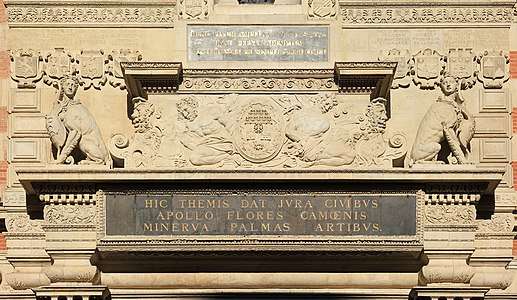 The middle part of the portal (1561) depicts enslaved prisoners.
The middle part of the portal (1561) depicts enslaved prisoners. The upper part of the portal (1602-1609) features a statue of King Henry IV.
The upper part of the portal (1602-1609) features a statue of King Henry IV.- The inner courtyard (1602-1606) is decorated with many coats of arms of capitouls.
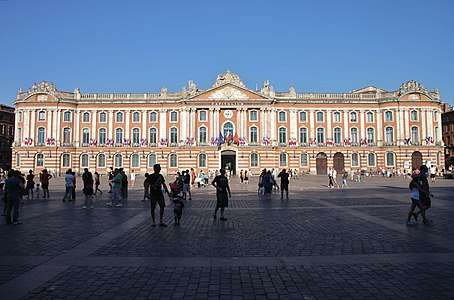 The main facade (1750-1760).
The main facade (1750-1760).- The balconies are decorated with the coats of arms of the capitouls.
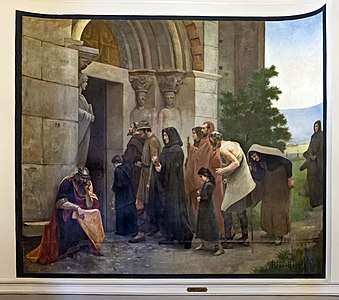 Painting of Raymond VI, Count of Toulouse, excommunicated by the Pope.
Painting of Raymond VI, Count of Toulouse, excommunicated by the Pope.- Painting of the first session of the Floral Games.
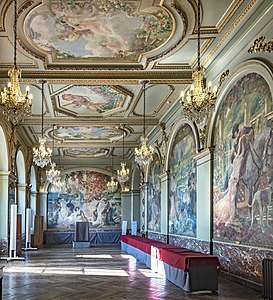 Gervais hall, former wedding hall.
Gervais hall, former wedding hall. Painting in Gervais hall.
Painting in Gervais hall.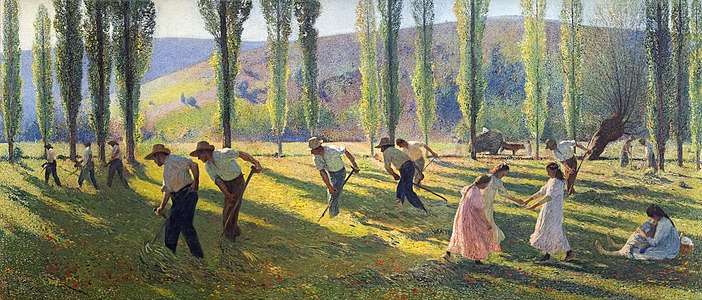 Painting in Henri Martin hall.
Painting in Henri Martin hall.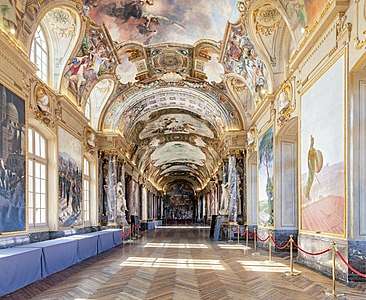 Hall of Illustrious.
Hall of Illustrious.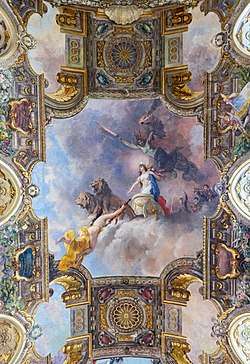 Paintings on the ceiling of the Hall of Illustrious.
Paintings on the ceiling of the Hall of Illustrious. Paintings on the ceiling of the Hall of Illustrious.
Paintings on the ceiling of the Hall of Illustrious. Paintings on the ceiling of the Hall of Illustrious.
Paintings on the ceiling of the Hall of Illustrious. Painting on a wall in the Hall of Illustrious, representing Raymond IV welcoming the Pope in 1096.
Painting on a wall in the Hall of Illustrious, representing Raymond IV welcoming the Pope in 1096._par_Paul_Gervais.jpg) Painting on a wall in the Hall of Illustrious, Dura lex, sed lex.
Painting on a wall in the Hall of Illustrious, Dura lex, sed lex.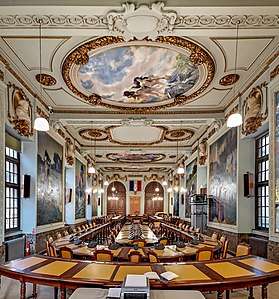 Council Chamber.
Council Chamber.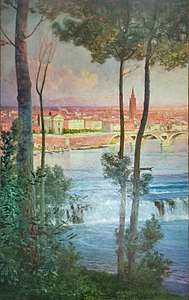 Painting of Toulouse in the Council Chamber.
Painting of Toulouse in the Council Chamber.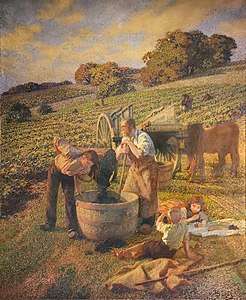 Grape harvest painting in the Council Chamber.
Grape harvest painting in the Council Chamber.
See also
- List of the mayors of Toulouse
- Parliament of Toulouse
References
Citations
Bibliography
- Turning, Patricia (2013), Municipal Officials, Their Public, and the Negotiation of Justice in Medieval Languedoc: Fear Not the Madness of the Raging Mob, Later Medieval Europe, No. 10, Leiden: Brill, ISBN 978-90-04-23464-2.
| Wikimedia Commons has media related to Capitole de Toulouse. |